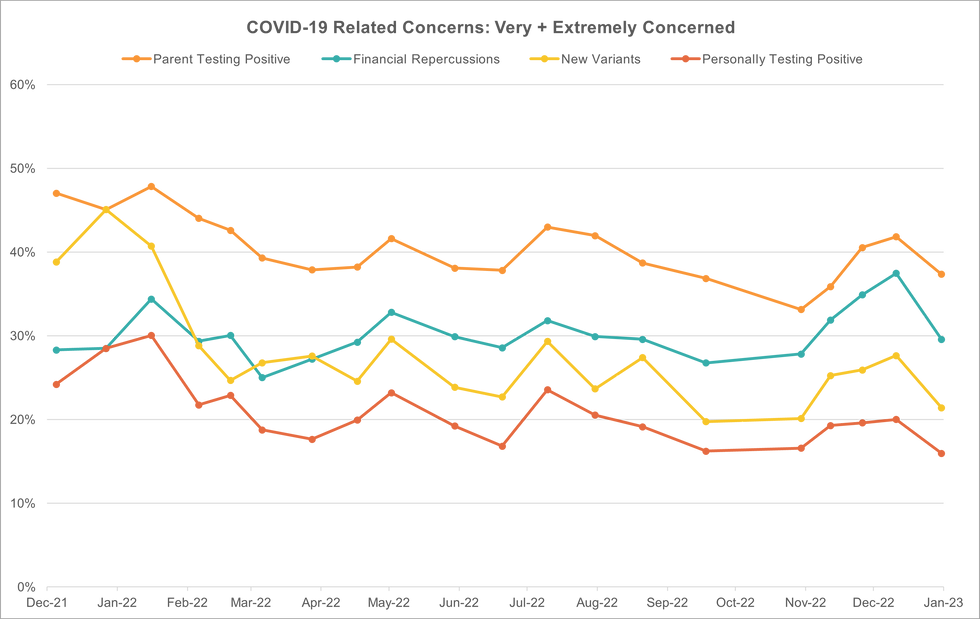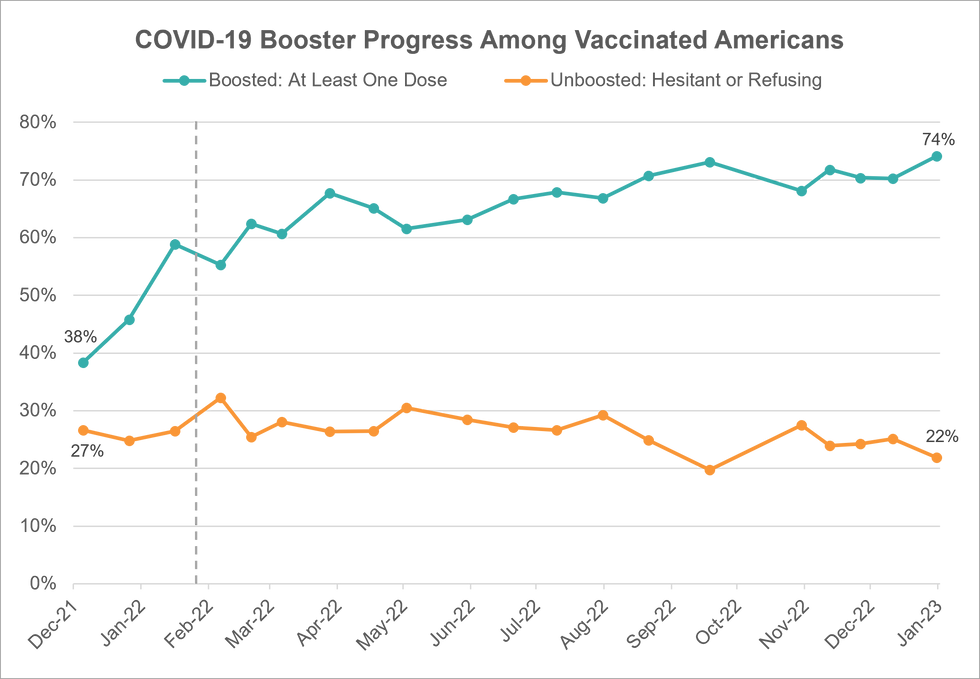COVID-19 in 2022: A Year in Review
- ThinkAlike Laboratories
- Feb 2, 2023
- 2 min read
Updated: Jun 1, 2023
Now that the third year of COVID-19 has ended, we look back at how Americans' behavior and concerns have changed throughout 2022.
At the end of 2021, the CDC shortened the recommended isolation period for people who tested positive for COVID-19 from 10 to 5 days. Furthermore, in April 2022, the federal government voided the mandate requiring masks on public transportation.
Also, in April 2022, the Omicron subvariant BA.2 began to spread rapidly across the U.S., making up more than 85% of cases in less than a month. In July, the U.S. saw a surge in cases, then another rise around November and December. Consistent with the easing of COVID-19 protocols and mask restrictions, we observed a steady decrease throughout 2022 in mask-wearing frequency in indoor and outdoor public spaces. However, we saw slight increases in mask-wearing during the times that coincided with the surge in cases.

Consistent with our previous findings, we observed significant disparity among political parties regarding indoor mask-wearing in public spaces. Democrats continued to wear masks the most and were more responsive during the spike in cases. However, we did observe an overall decrease in mask-wearing across all parties by the end of 2022.

The well-being of elderly loved ones and the financial repercussions of COVID-19 continued to be a top concern among respondents this past year. We saw a jump in the level of concern regarding finances earlier in 2022 which persisted throughout the year, while concerns regarding respondents' older loved ones testing positive for COVID-19 remained the top concern ("very" or "extremely" concerned).

The COVID-19 vaccine and booster shots continued to be an important topic in 2022. In late January 2022, the FDA fully approved the Moderna COVID-19 vaccine for people 18 or older. Over the year, we continuously asked vaccinated respondents about their intention to get boosted. In 2022, we found a 36% increase among respondents who had received at least one COVID-19 booster shot. Furthermore, we saw a 28% decrease among respondents who had not received any COVID-19 booster shots.

While there were highs and lows across 2022, we saw an overall increase in optimism among respondents. We continued to ask respondents if they felt the worst of COVID-19 was behind or ahead of us and if they thought their lives had returned to pre-pandemic 'normal.' Our results reveal a 20% increase among respondents who "agree" or "strongly agree" their life has returned to "normal." We also found a 25% increase among respondents who believe that the "worst of the pandemic is behind us."

Last updated on February 2, 2023. Please check back for updates.
Results based on surveys of 4,866 respondents from December 20, 2021 through January 9, 2023. All surveys were conducted online from respondents in the United States.
For more information about our survey techniques, click here to visit our Methods page.